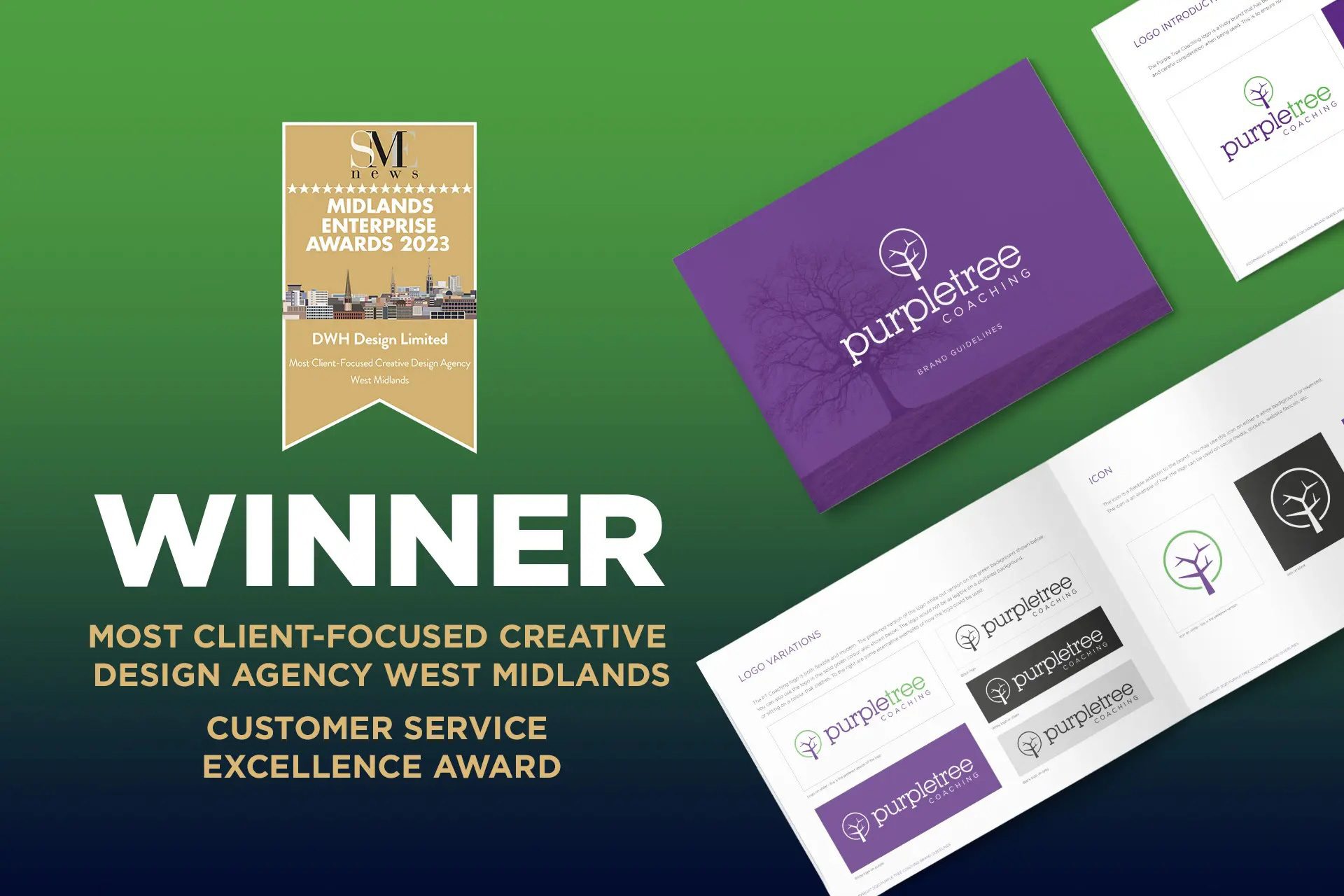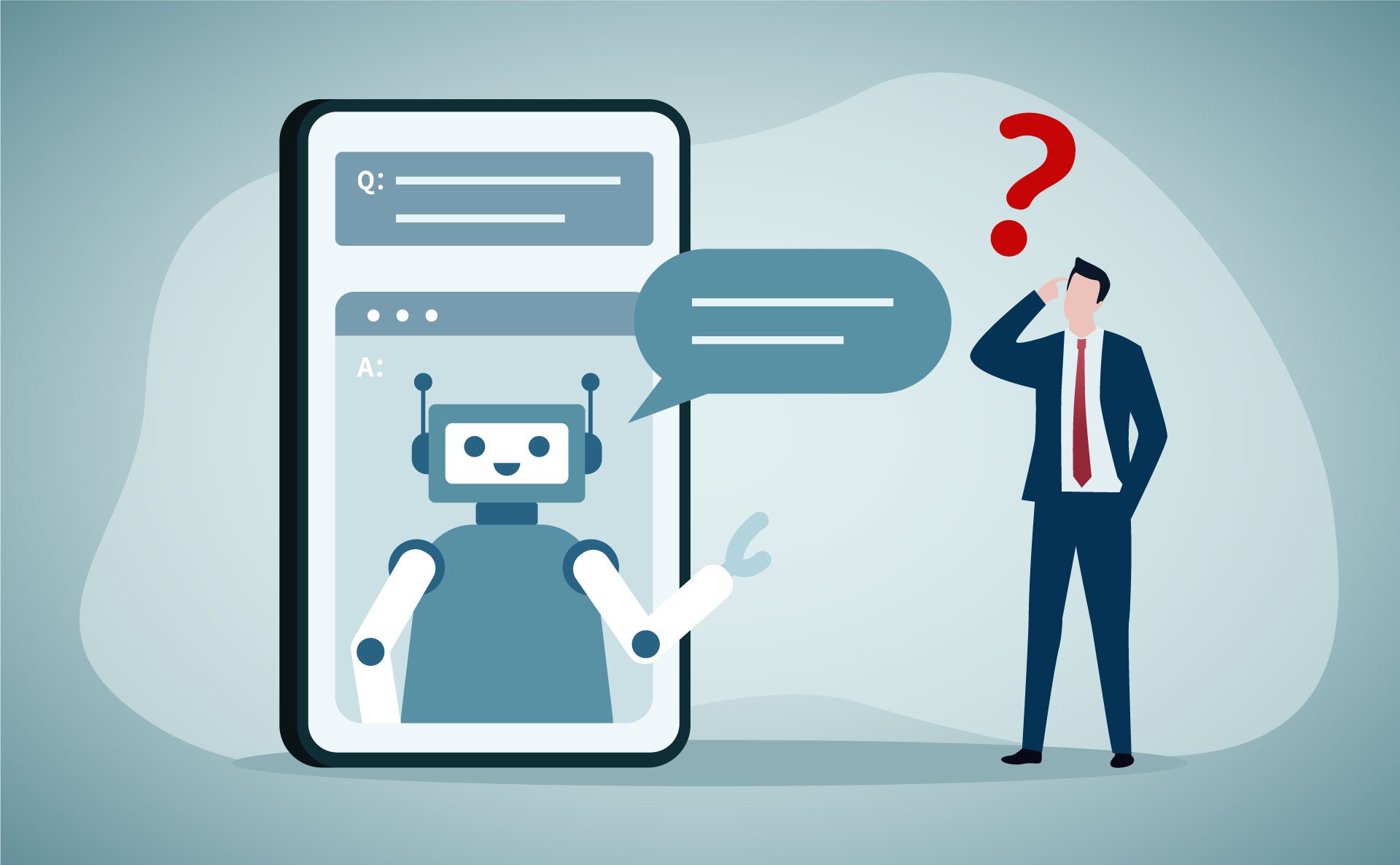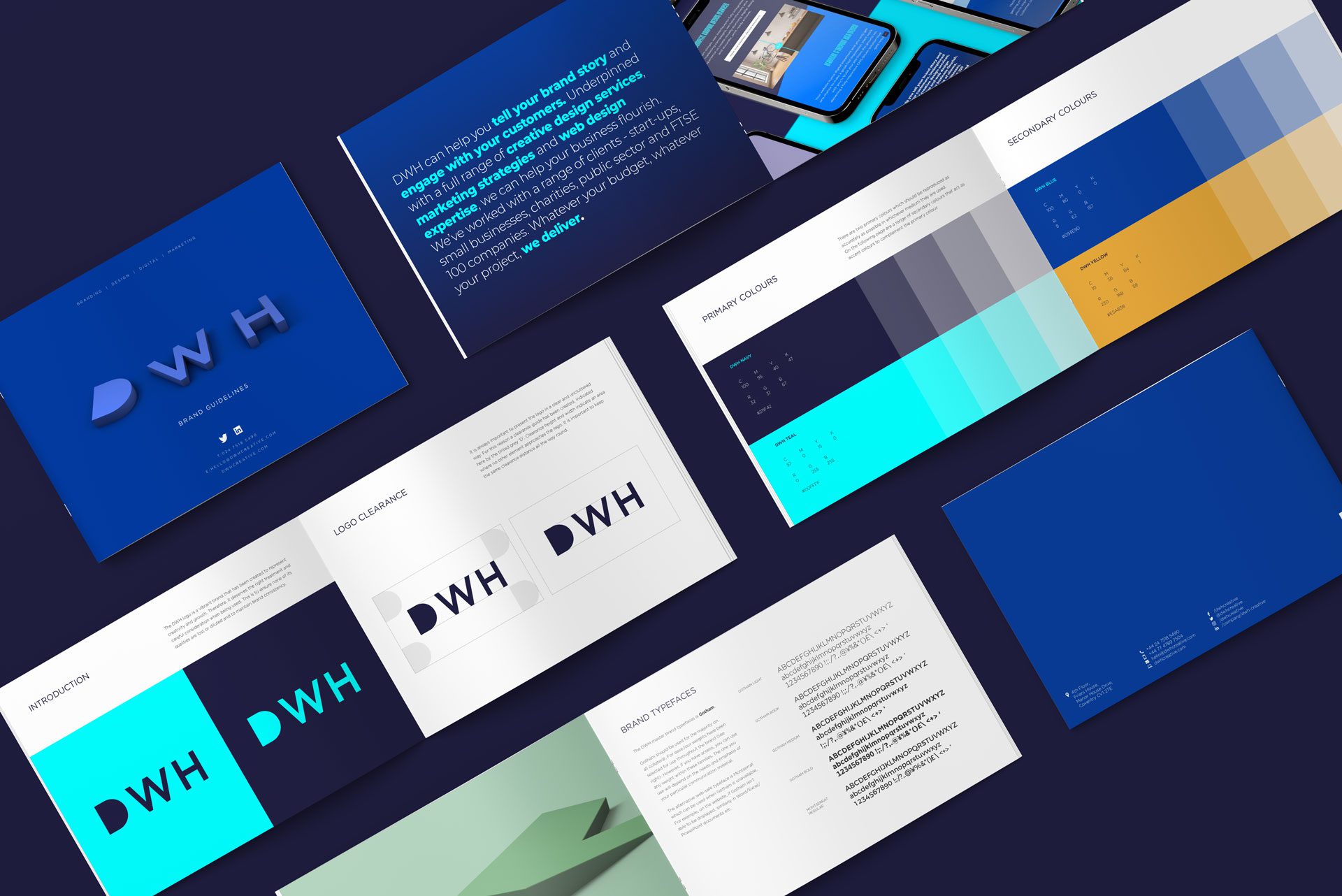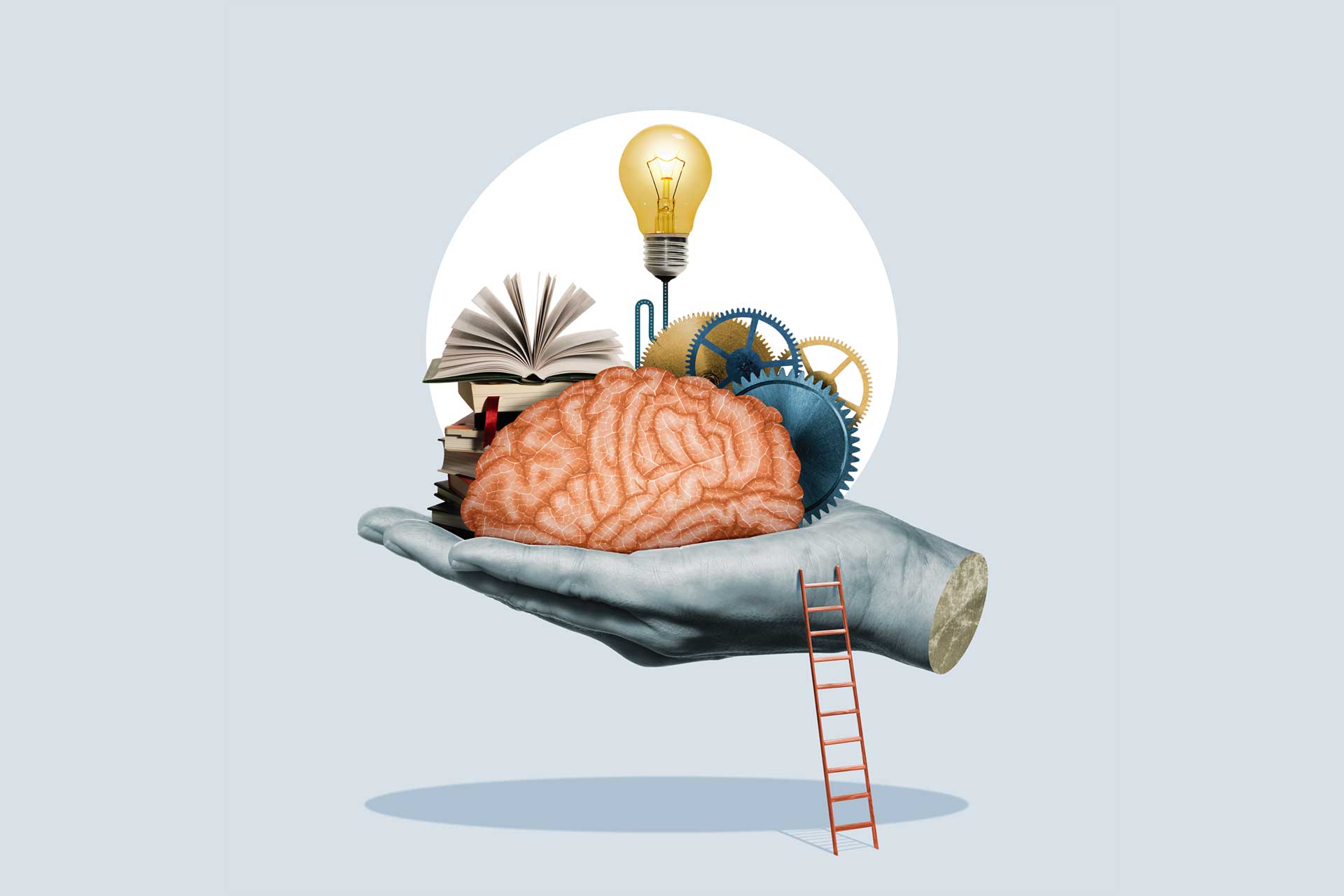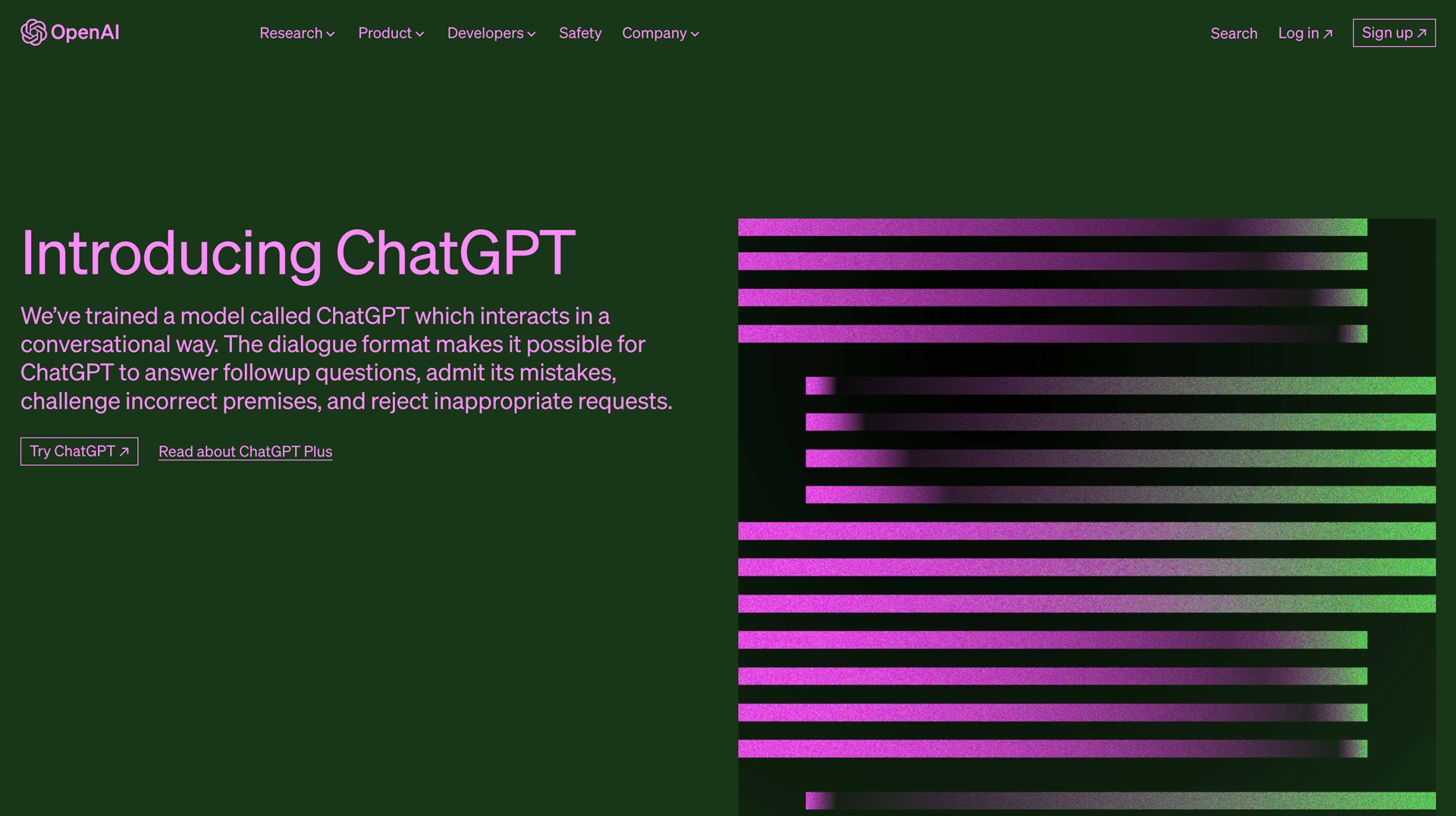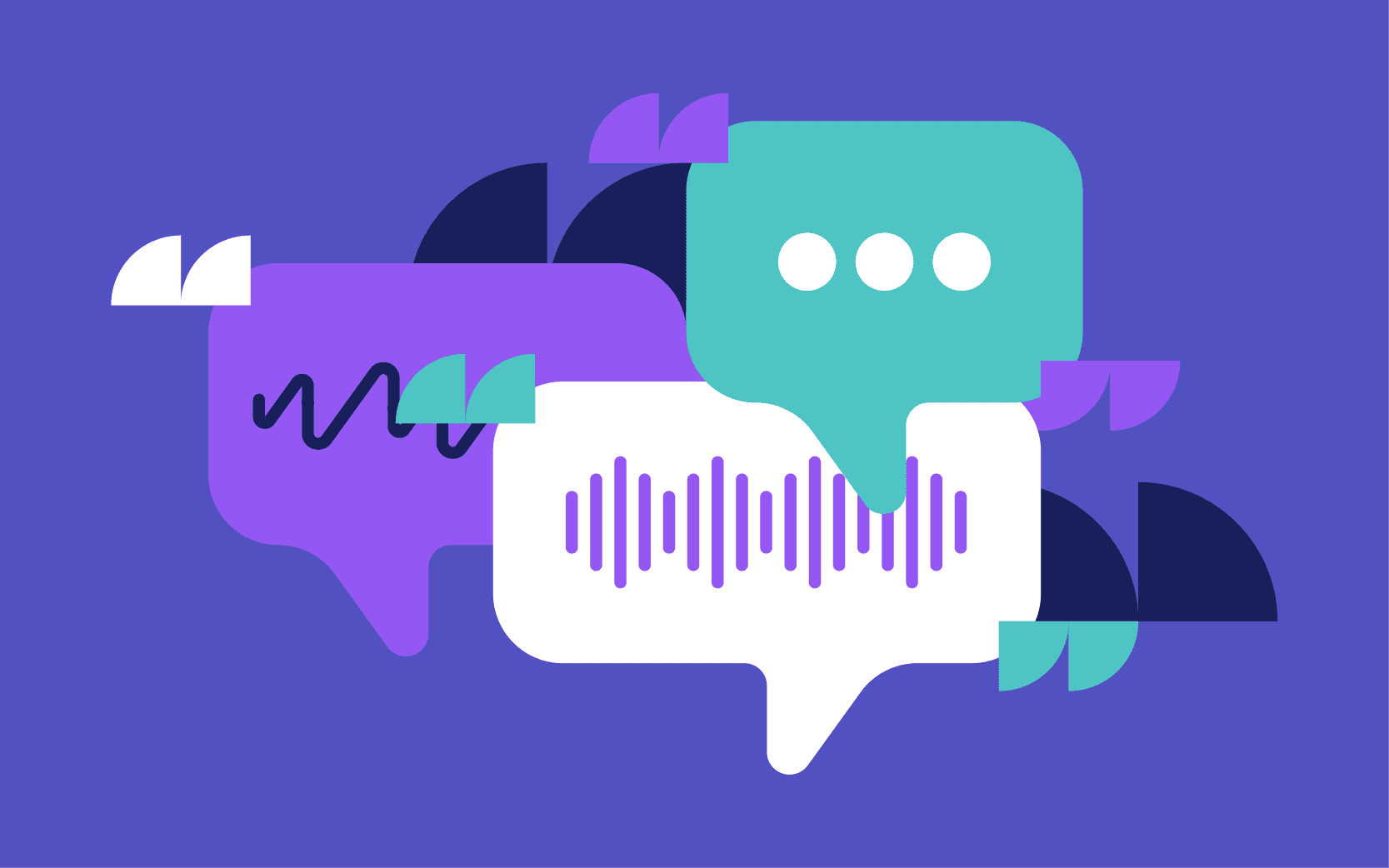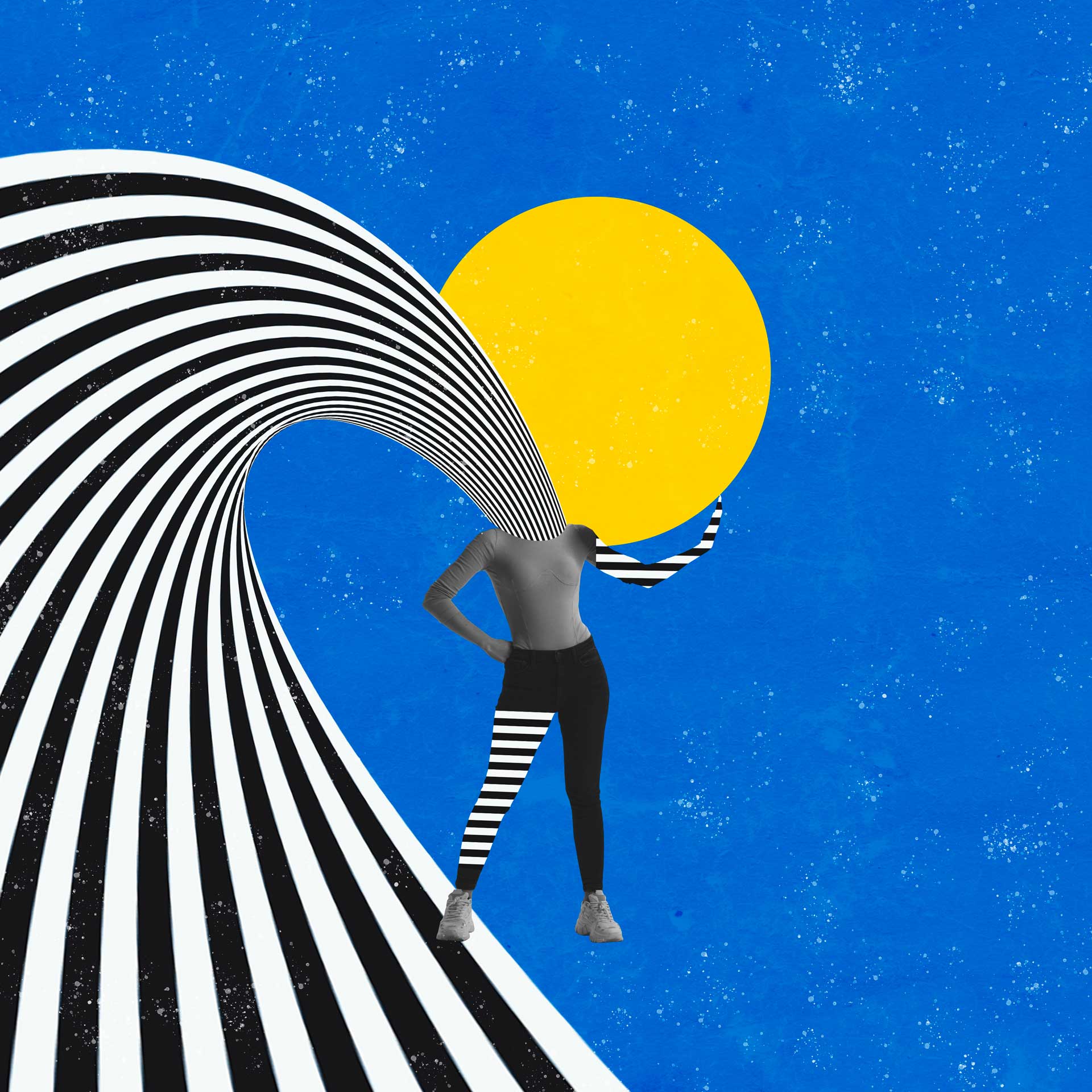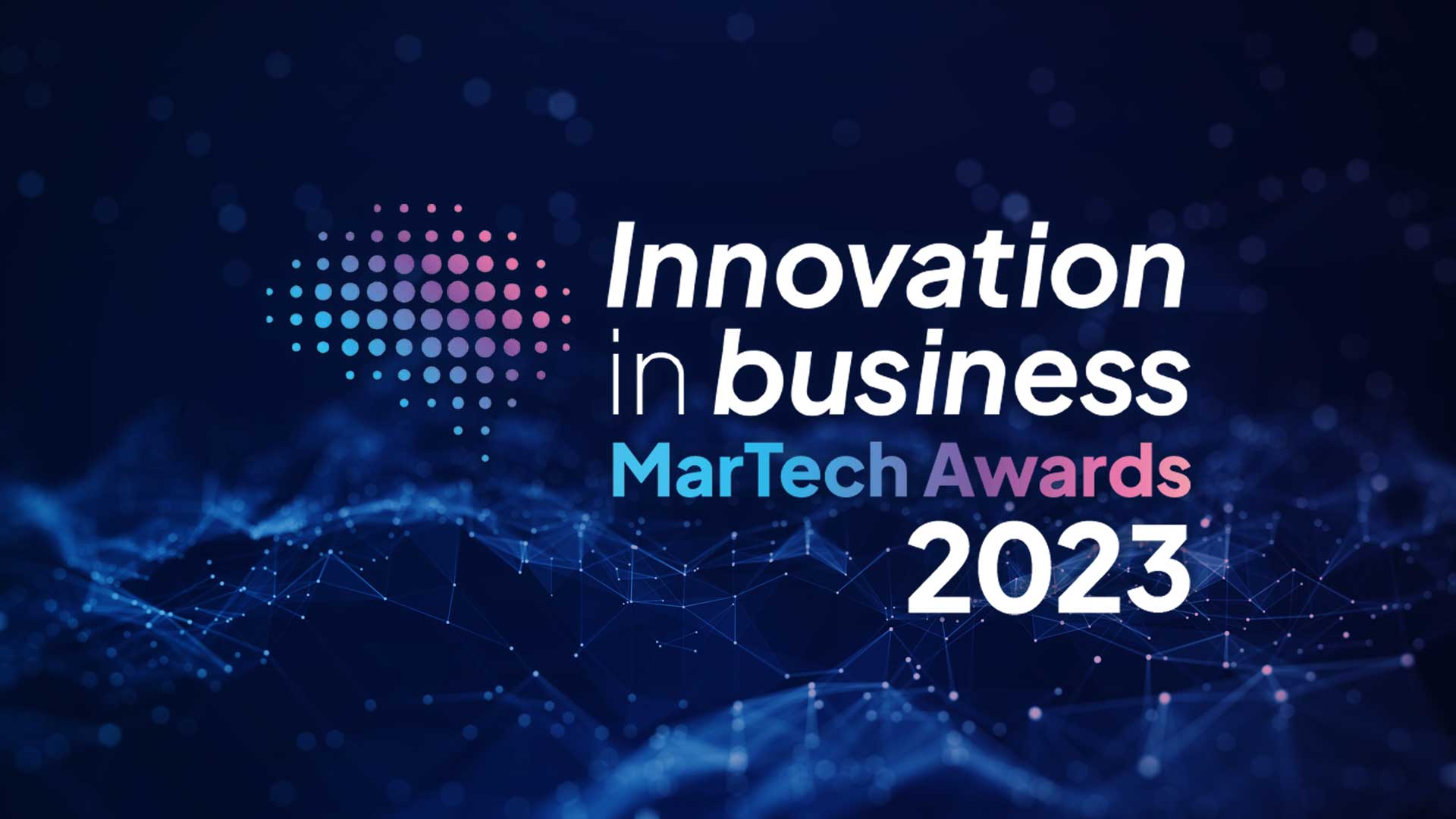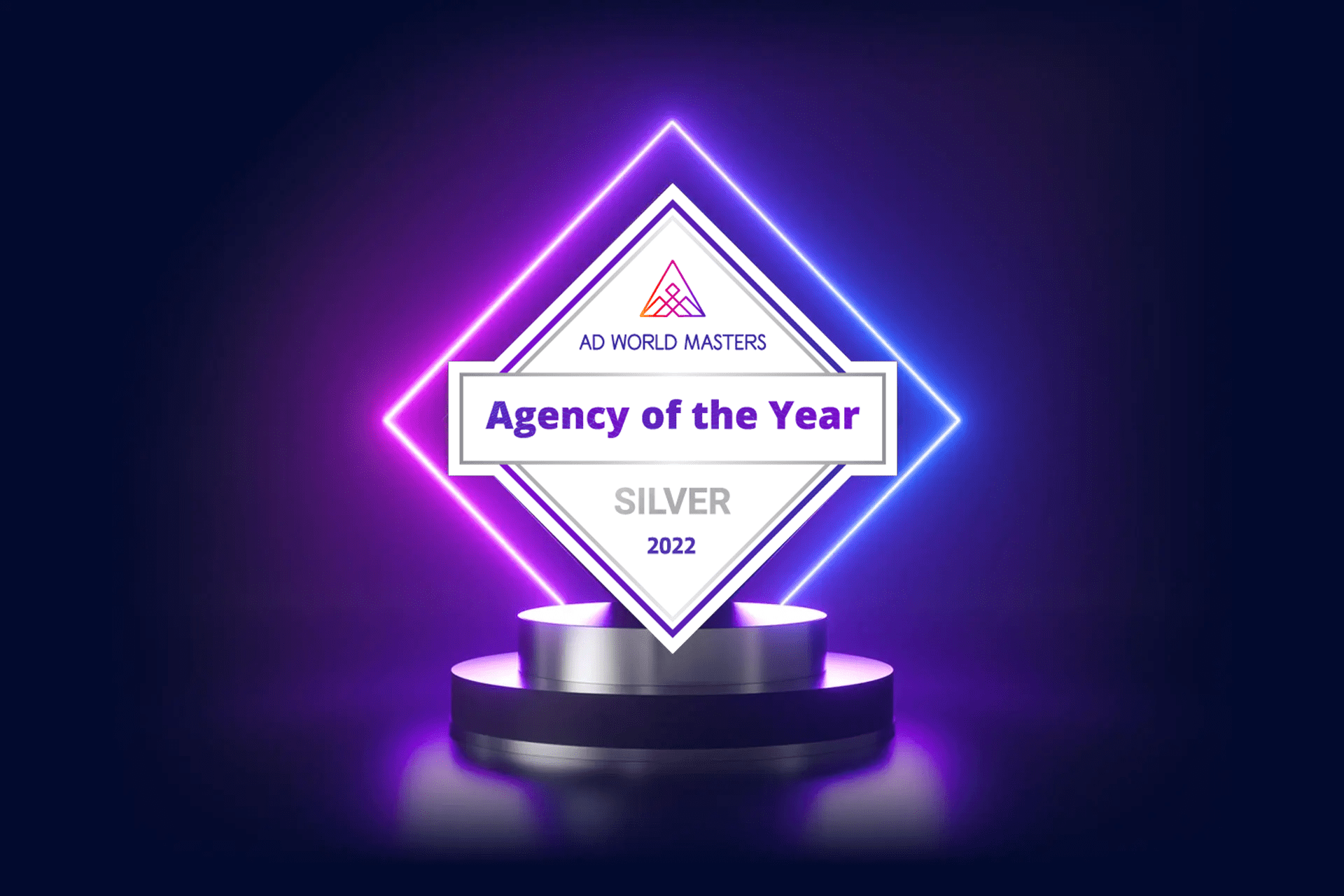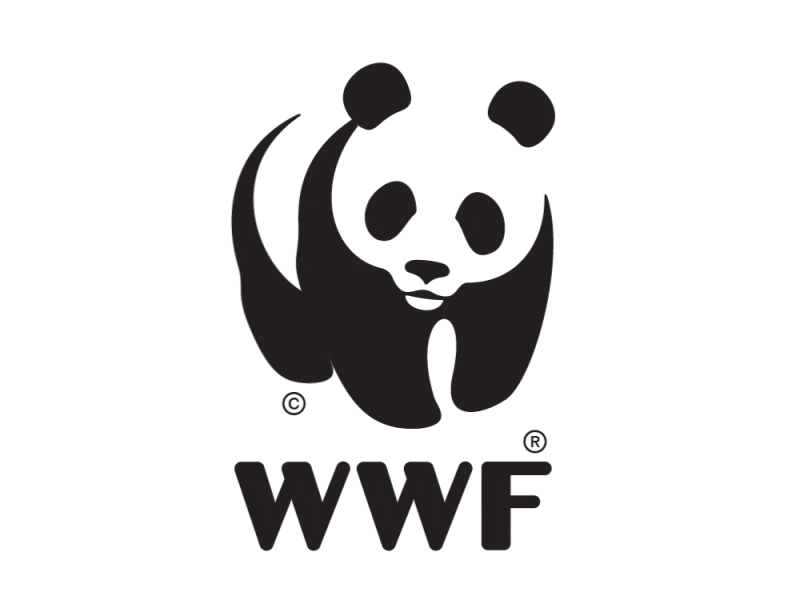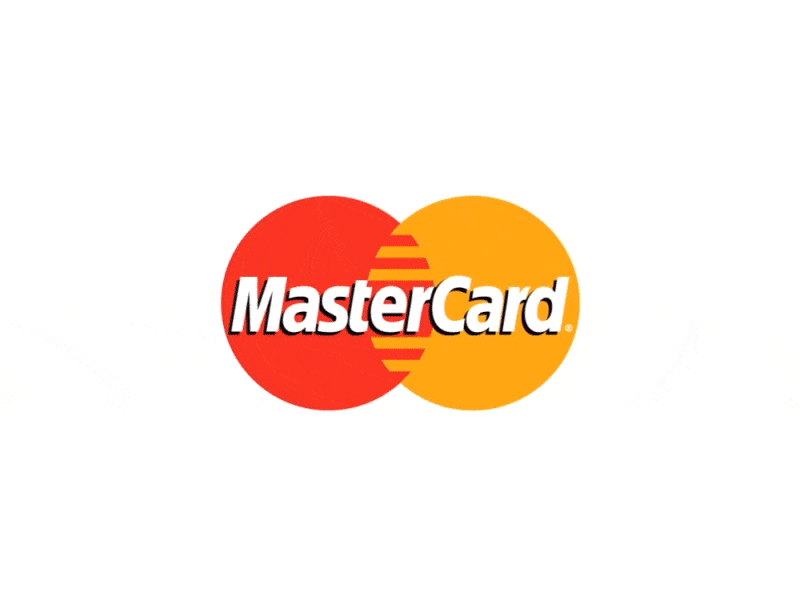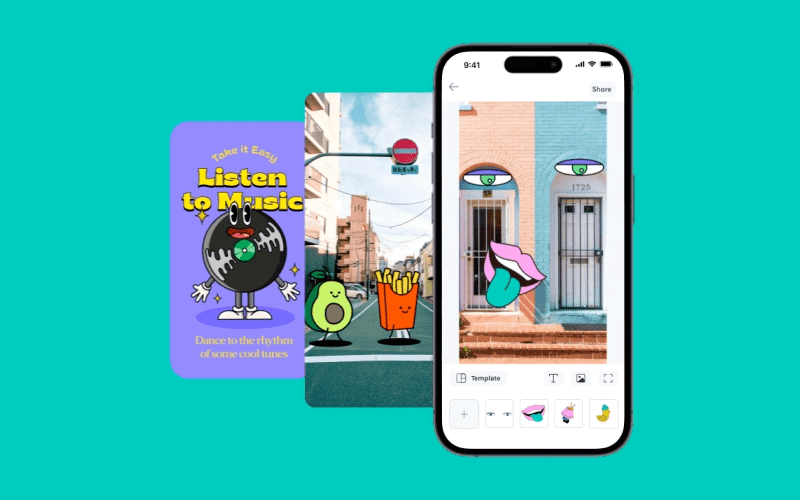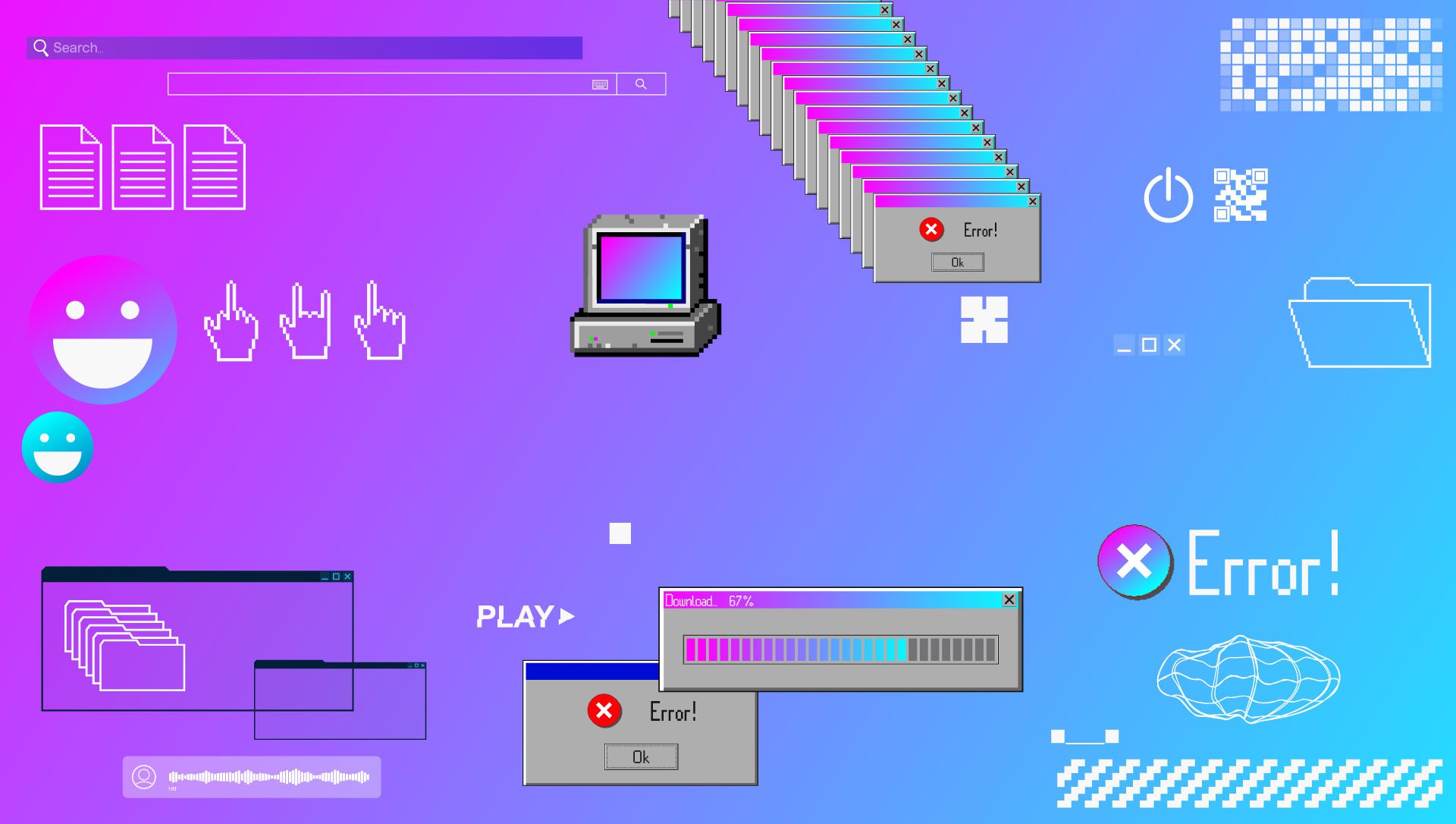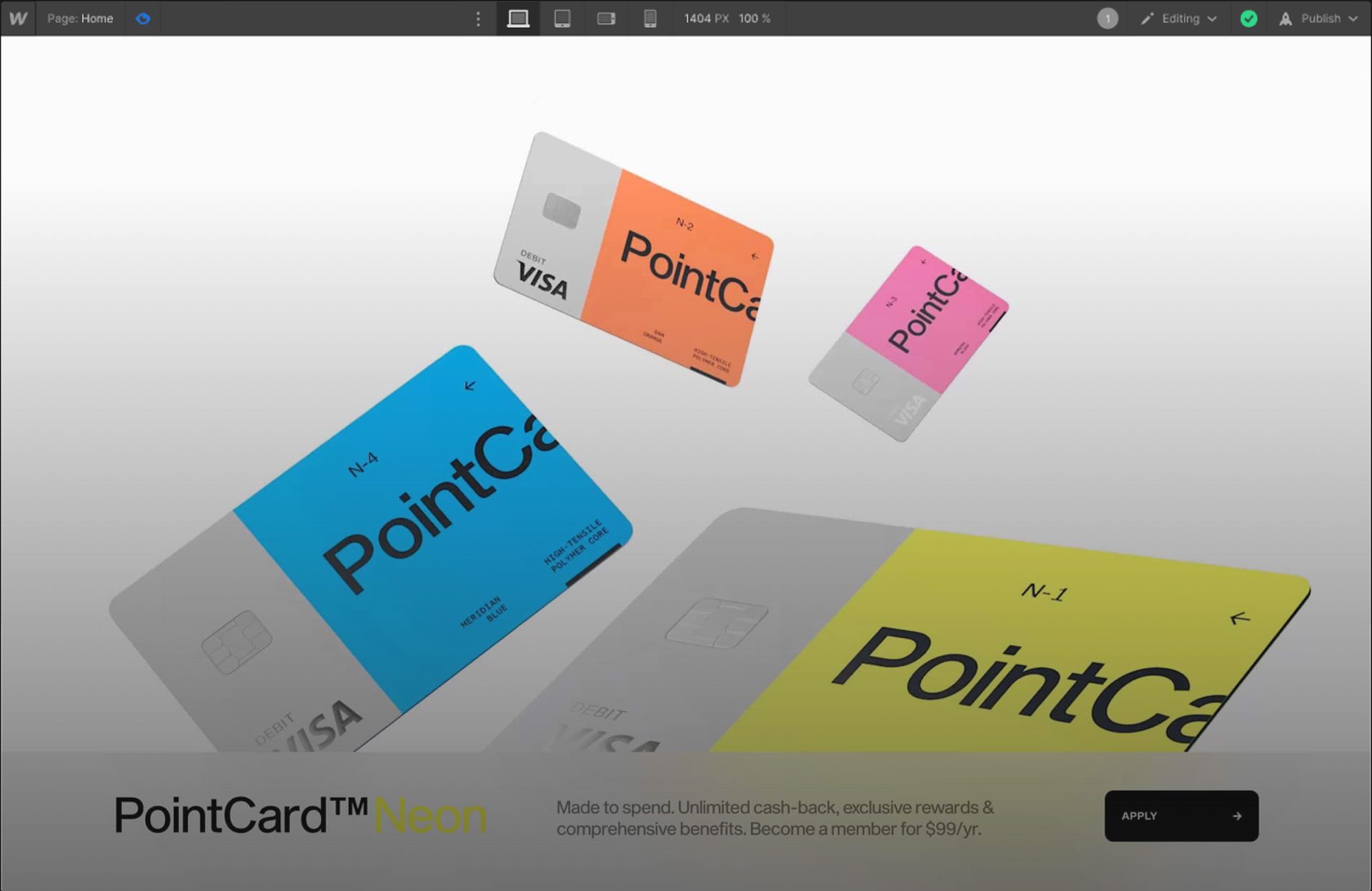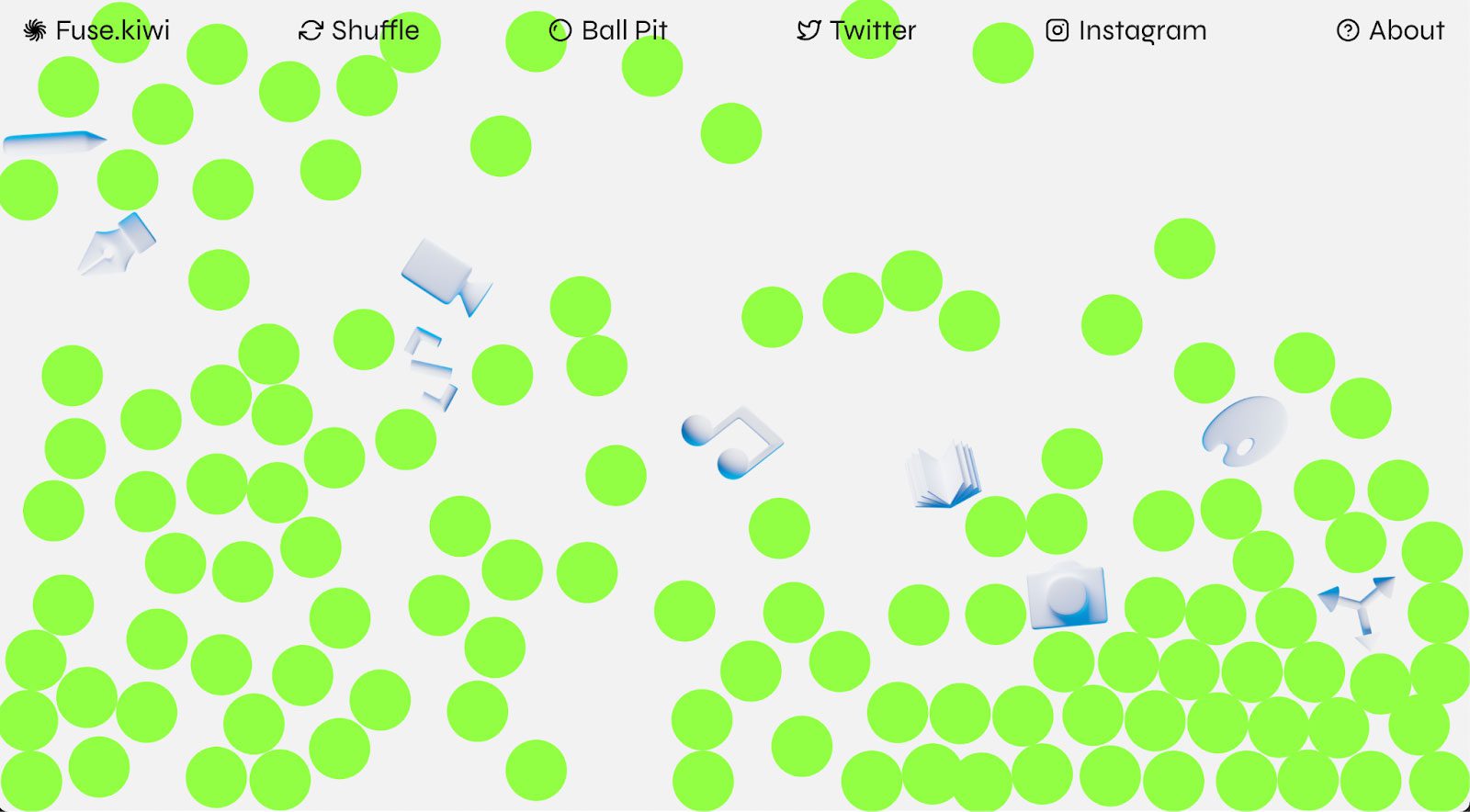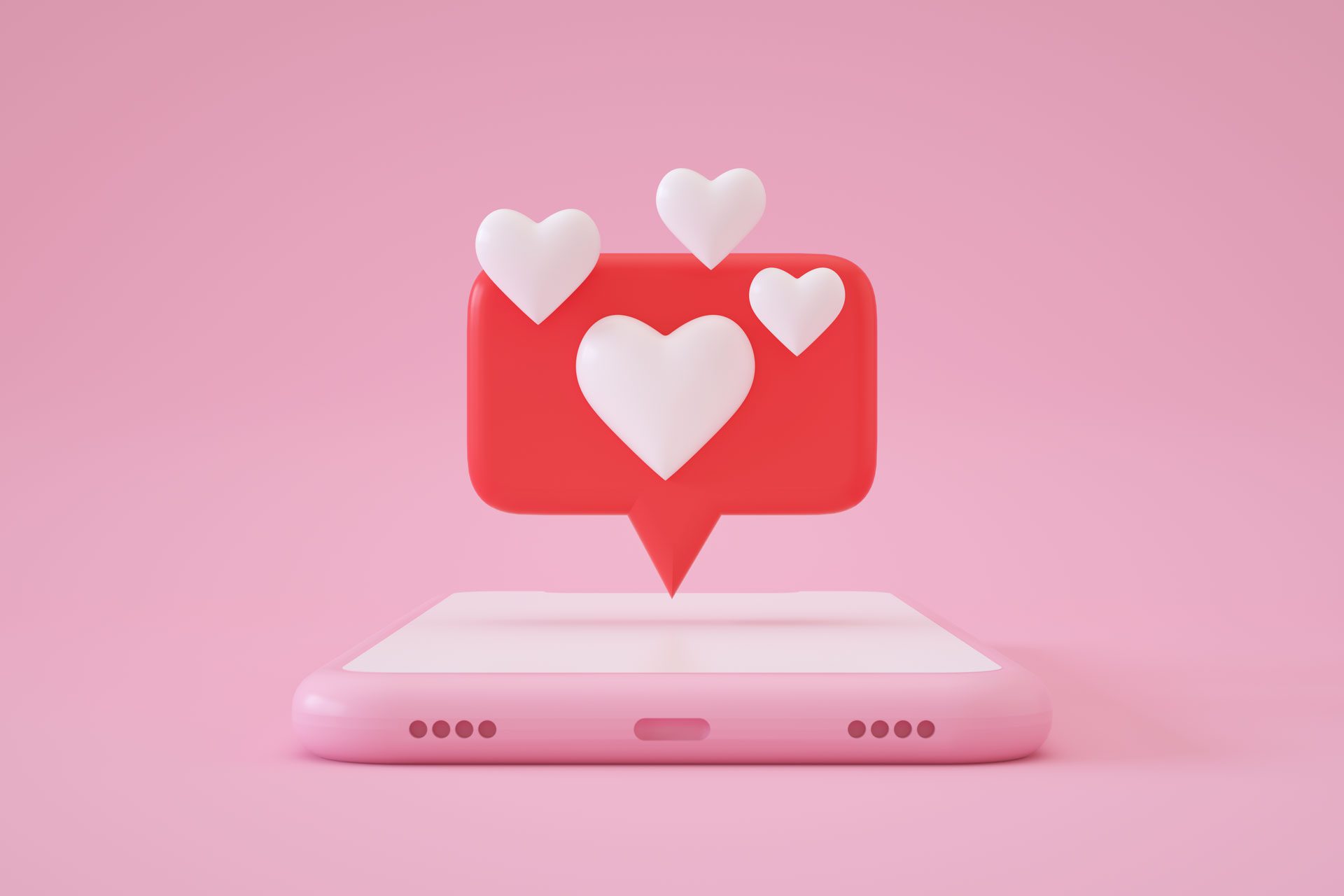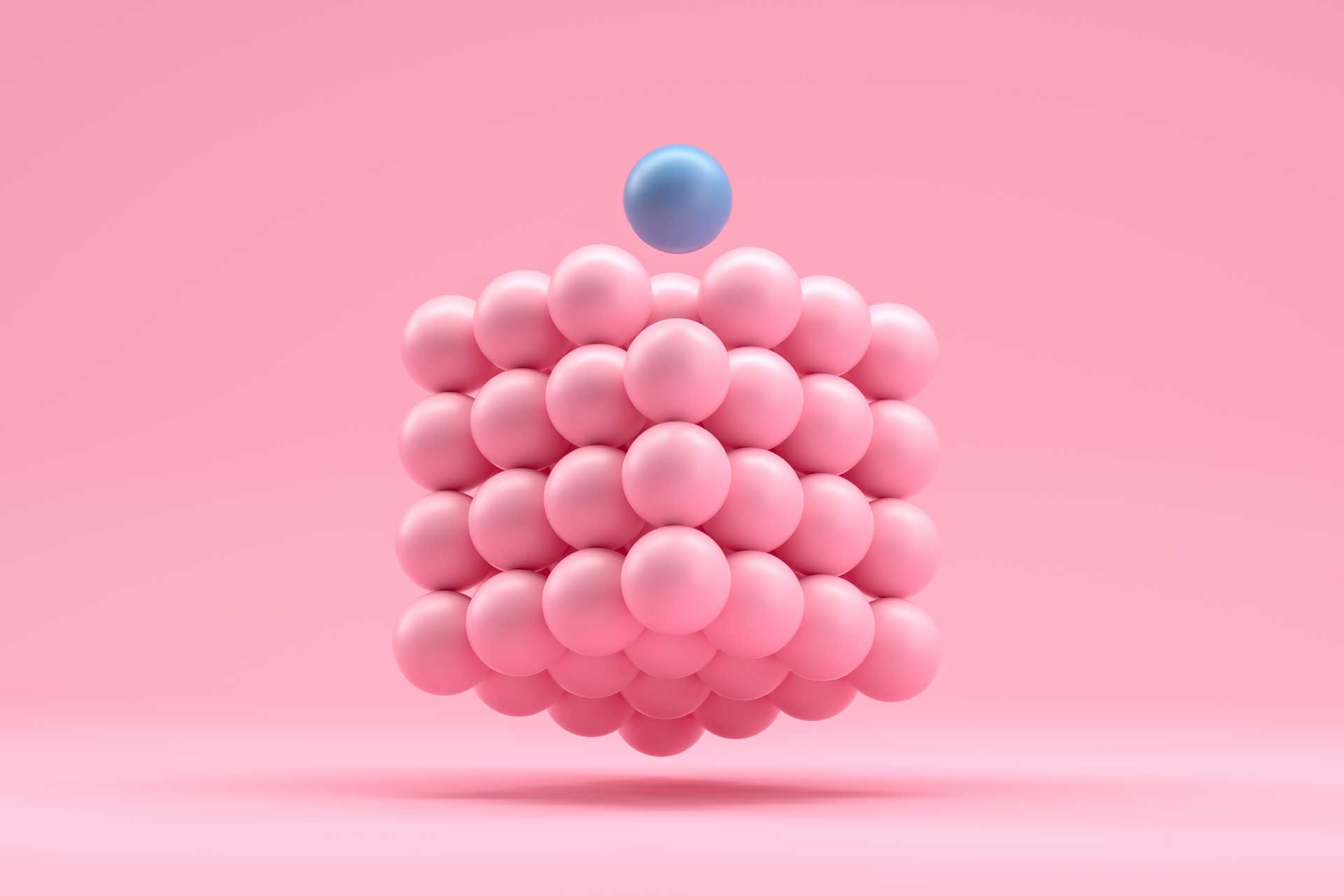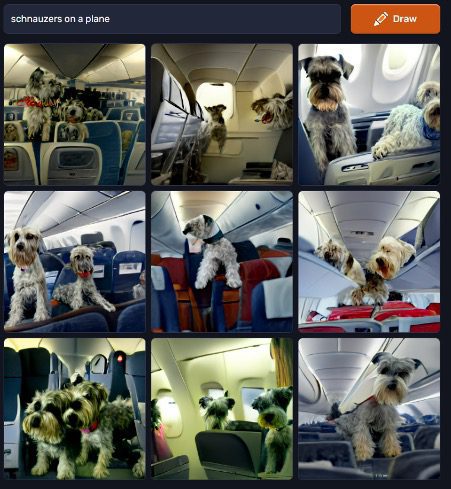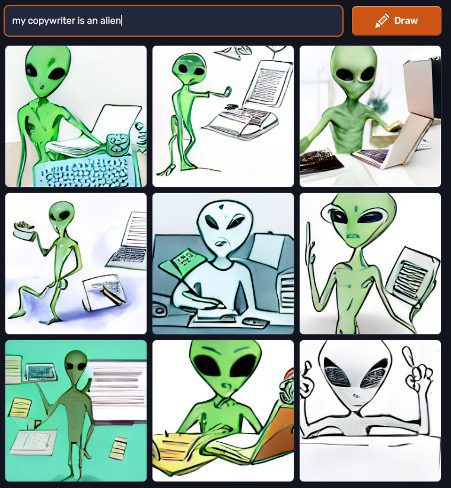Our customer focus can’t be beaten – and we’ve got an award to prove it!
We’re once again excited to announce that DWH has been named Most Client-Focused Creative Design Agency – West Midlands in the 2023 SME Midlands Enterprise Awards. This is the second year in a row that we’ve been awarded this title
We’re once again excited to announce that DWH has been named Most Client-Focused Creative Design Agency – West Midlands in the 2023 SME Midlands Enterprise Awards. This is the second year in a row that we’ve been awarded this title
SME Awards 2023
The SME News Awards were created to celebrate the best of the best small businesses in each region. Small businesses are an important part of the economy, with 5.5 million small businesses accounting for 99.2% of total business in the UK.
SME News selects award winners based solely on merit, commending businesses for their ingenuity and hard work. The awards aim to acknowledge the most deserving and best-performing small and medium enterprises across the UK, particularly those who demonstrate real dedication to their clients and customers
The Midlands Enterprise Awards 2023
Part of the SME News Awards, the Midlands Enterprise Awards provide a platform for celebrating the unique achievements and innovations of businesses operating in the region, as well as their contributions to the Midlands’ business community.
The 2023 winners showcase local businesses and individuals who are setting the standard for innovation and customer service in a wide range of industries. Taking the award for Most Client-Focused Creative Design Agency for the second year in a row shows the dedication that the DWH team shows every day to the clients we work with, and it’s an honour to have our efforts in this area recognised.
Want to work with an award-winning creative design agency?
Fancy putting our client focus and excellent customer service to the test? Get in touch to discuss your project and experience our client focus and creative problem solving for yourself.
Whether you’re looking to modernise your website design, create a new brand identity or promote your products and services on social media, the award-winning DWH team is on hand to support every aspect of your marketing strategy.
Can AI write a good promo article for your business?
In our previous article, ChatGPT wrote 595 words in 20 seconds, and it took JB about 10 seconds to set up. All in all, not a bad ratio of time to output. In contrast, this article is 1,068 words long and took me 2 hours and 18 minutes to write. But how do the two compare?
In our previous article, ChatGPT wrote 595 words in 20 seconds, and it took JB about 10 seconds to set up. All in all, not a bad ratio of time to output. In contrast, this article is 1,068 words long and took me 2 hours and 18 minutes to write. But how do the two compare?
While JB was able to provide an article topic and the DWH website for inspiration, he couldn’t tailor the content further. Some AI tools offer more flexibility and customisation, allowing you to tell it exactly what points to include. However, this doesn’t stack up against an experienced employee who knows by instinct what the essential topics are.
Here are some of the ways that this article fails to hit the mark that could be instantly avoided by a human.
The content is generic and uninspiring
AI tools work by delving into their knowledge of similar content and trying to recreate it. AI therefore isn’t really capable of having an original thought or presenting a unique viewpoint. Instead, most of the 595 words written are tired marketing clichés. Let’s take a look at a few examples.
The phrase “proven track record of success” returns over 4 million Google search results with quotes and 66.3 million without. “Comprehensive range of services” gives you 6.5 million with quotes and 740 million without. Not exactly unique and inspiring, is it?
Aside from the rampant clichés, many of the sentences are utterly bland and don’t really say anything at all. “They are proud of their work and the results they have achieved for their clients.” What work? What results? What clients? Nothing here builds trust, inspires action or demonstrates the uniqueness of DWH.
The tone doesn’t match DWH’s brand
Perhaps worse than this is the cold, unfriendly tone created by writing vague statements in the third person. It’s interesting that the tool made this choice after JB gave it DWH’s first-person-centric website as reference. This makes the article feel very impersonal, like we farmed it out to someone (or something) with zero connection to the brand.
By invoking the anonymous “they”, the article takes away the human connection. Phrases like “they work hard” and “they work closely with their clients” put too much distance between the reader and the brand. We want readers to feel a connection with the content and to feel genuine excitement behind every project.
The AI-generated article also includes a few phrases that would sound absolutely bonkers if a real person said them. My favourite of these is: “In conclusion, DWH Creative is a top-notch digital marketing agency…” Dave, can we adopt a new company tagline, please?
It doesn’t score well on readability
The Hemingway Editor gives the ChatGPT-generated article a fairly poor readability score. It uses the US school grade level to estimate the level of education needed to read and understand the text. Hemingway suggests aiming for a tenth-grade level (ages 15–16), but it’s important to write for your audience. For example, GOV.UK recommends that its contributors write for a nine-year-old reading age (Grade 3–4) for clarity. Hemingway estimates the AI-generated article at a twelfth-grade level (ages 17–18), so it’s likely too complex for the average reader.
Here’s some good news. The article meets the goals of 6 or fewer adverbs and 7 or fewer uses of the passive voice. Hemingway also only identified one phrase with a simpler alternative. The bad news is that 6 of 36 sentences are ‘hard to read’ and 17 of them are ‘very hard to read’. This means that more than half of the article is a little too complex.
Hemingway uses reliable yet inflexible algorithms to determine readability. Not being able to take the full context into account means they aren’t suitable for all use cases. After all, aiming for Grade 9 readability on your doctoral dissertation might be unwise. It’s always important to write for the human audience who will be reading your words.
While you should take these recommendations with a pinch of salt, remember that another big fan of readability is Google. Sites that are easy to read and understand often rank better. Google might not look upon ChatGPT’s article too favourably, and that could hurt your SEO.
For reference, Hemingway scores this article at grade 8 readability. It thinks 24 out of 74 sentences are ‘hard to read’ and only 1 is ‘very hard to read’. Can you spot it?
It uses US spelling and terminology
It might not be instantly obvious to all readers, but ChatGPT used American English to write the article. This means that it uses ‘optimization’ and ‘customized’ instead of ‘optimisation’ and ‘customised’. This is a minor difference, but it’s exactly this level of attention to detail that our clients are looking for.
Using UK or US spelling shouldn’t affect your SEO, but using the wrong one could be off putting to visitors. If you rely on local customers, accurately representing yourself as a British brand could make or break conversions. For topics where vocab varies between countries, however, an American focus might hurt your SEO. Think bonnet versus hood, or trousers versus pants. These keywords will bring up very different results depending on your location.
In conclusion…
Sorry. I couldn’t help myself. This AI-generated article isn’t up to scratch, and we wouldn’t be happy to put our names on this work and deliver it to our clients. However, there are more sophisticated AI tools out there, and the technology is advancing all the time.
In its current form, AI can be a useful tool for gathering information and creating a decent starting point for a human to refine. For now, it looks like the robots will be collaborating with us rather than taking our jobs, though there’s a very real possibility that machine learning will be able to create unique, complex copy that fits seamlessly alongside a brand’s existing content.
If you prefer less digital in your digital marketing, chat to DWH. Our team is backed by years of lived experience in online and offline marketing. We offer a human touch that robots have yet to successfully reproduce – and we’re good at it.
The rise of AI in the creative and digital marketing sectors
Well, it’s official. The robots are coming for our jobs. Us creatives always thought we were safe, that we couldn’t be replaced by machines… But the machines had a different idea. Of course, we’re talking about artificial intelligence, and how AI has begun to creep into the more creative sectors like creating art, designing logos and writing articles. So what is artificial intelligence being used for, is it doing a good job, and how are things going to progress from here?
Well, it’s official. The robots are coming for our jobs. Us creatives always thought we were safe, that we couldn’t be replaced by machines… But the machines had a different idea. Of course, we’re talking about artificial intelligence, and how AI has begun to creep into the more creative sectors like creating art, designing logos and writing articles. So what is artificial intelligence being used for, is it doing a good job, and how are things going to progress from here?
The rise of the machines
When we talk about the rise of AI, we really are looking at a strong upward trajectory. Google Trends has shown that interest in AI tools is currently at an all-time high. As the technology continues to evolve, we’ll see it used in more and more applications. Artificial intelligence has already come a long way over the past few years.
Back in 2016, chatbots were all the rage. Touted to be the next big marketing trend, with brands of all sizes rushing to get on the hype train, the excitement kind of just fizzled out after a year or so. A lot of this was due to disappointment in the reality of what a chatbot actually is, or what it was in 2016, which didn’t amount to much more than Microsoft’s universally detested Clippy.
The initial buzz around chatbots was caused by examples like Facebook’s chat assistant M, which was a virtual assistant capable of completing tasks for users. However, when M didn’t understand something (which turned out to be a lot of the time), a human quietly intervened to help out. This gave users an unrealistic expectation of what chatbots of the time were able to do, and people began to lose interest in 2016’s Next Big Thing.
Everyone’s chatting about ChatGPT
The current household name in the world of all things AI is ChatGPT. Developed by OpenAI, this conversation-style artificial intelligence tool has been all over social media and news channels over the last few months. Google Trends shows that, just 6 months ago, absolutely nobody was talking about ChatGPT.
The moment “ChatGPT” jumped into the everyday lexicon lines up with the increased interest in AI tools, which had been simmering in the public consciousness over the last 5 or 6 years but never really boiled over. The easy-to-use chat format and the API capabilities of this tool are some of the reasons why ChatGPT has become the breakout tool.
However, even these more advanced tools don’t always deliver, and trying to get them to understand what you’re looking for can sometimes be more time consuming than its worth. While 2016’s chatbots were only really suitable for repetitive tasks within limited applications, they were pretty much perfect at doing it. ChatGPT is much more advanced, which means there is more expectation and more that can go wrong. To a degree, these more advanced AI tools are capable of ‘creating’ – and that’s an issue in itself.
When artificial intelligence isn’t so intelligent
AI is still in its infancy and, as such, there are quite a few issues to be ironed out. For example, ChatGPT has started to share completely made-up information as facts, including inventing sources. This is a huge problem for a wide variety of industries, particularly those that rely on reliable research, such as science and journalism. Of course, it also means that the general public is being exposed to even more ‘fake news’ on a daily basis – fake news that can be generated from a prompt in just a few seconds.
Tools like ChatGPT work by being fed huge amounts of information and using a model of machine learning to ‘understand’ and reproduce text as if written by a human. So this system relies heavily on ‘what you put in is what you get out’. Only feeding an AI tool information from very right-wing sources is going to provide biassed responses. Similarly, AI tools are surprisingly easy to manipulate by using leading questions, and (unless programmed otherwise) can be encouraged to create harmful content.
Putting the ‘art’ in ‘artificial intelligence’
One of the big issues using AI for creative applications is the fact that everything that comes out of the tool has to have been fed in from somewhere else. So while the words or images made with tools like Deep Dream Generator are technically unique, they use existing images, photographs, articles and more as the ingredients. This is of course a nightmare in terms of copyright and intellectual property.
Artists have been particularly vocal about the legal and moral complications of AI-generated images. Artificial intelligence doesn’t ask for permission to use copyrighted media, or reference its source material. This is all aside from the argument that the creation of art is an intrinsically human endeavour, combining years of lived and shared experiences with complex stories and emotions. AI tools aren’t able to create unique concepts; they can only remix existing material, often resulting in images that feel just slightly wrong or uncanny.
AI image creation offers an exciting starting point for reference material, ideation and experimentation, but it can’t replace the true experience of creating and enjoying art. While the technology will likely continue to evolve to be able to generate even more realistic images, the issues surrounding copyright and morals will still exist. Unless they can be addressed, AI-generated art will continue to be a complicated matter with no clear solution.
Rather work with a human?
As a digital agency, it’s important that we keep up to date with the latest developments in the wider marketing sector. However, AI certainly isn’t a trend that we’re planning to jump on. We only offer services that we stand behind 100% and are happy to put our name to. Having experimented with AI-generated articles, we’re confident that our human-led services are still above and beyond the capabilities offered by artificial intelligence.
If you’d like to benefit from our expertise with all things design, we’d love to hear from you. Get in touch today and let’s have a chat about your project.
Midlands’ Digital Brand Development Agency of the Year 2023
Innovation in Business Magazine has announced the 2023 recipients of its MarTech Awards, showcasing expertise and innovation in digital marketing, and guess who picked up a win?
Innovation in Business Magazine has announced the 2023 recipients of its MarTech Awards, showcasing expertise and innovation in digital marketing, and guess who picked up a win?
MarTech Awards 2023
Now in their second year, the Innovation in Business MarTech Awards were created to showcase expertise and innovation in digital marketing.
This modern, fast-paced industry is constantly being reshaped by exciting developments in technology, and only those who move with the times are able to provide the services that their clients need to grow and thrive. By highlighting the dedication and commitment of the individuals and companies who go above and beyond, MarTech hopes to improve and inspire the digital marketing landscape for clients and businesses alike.
What is MarTech?
MarTech is one of those fun portmanteau names that have been all the rage since Bennifer and Brangelina hit the tabloids back in the early 2000s.
Short for marketing technology, it refers to the technology that marketers use for … marketing. Naturally. Integrating the right tools into an innovative, goals-driven marketing campaign is the secret behind creating success in the digital space, and that’s exactly what Innovation in Business Magazine aims to reward with its MarTech awards.
MarTech Awards 2023
For the second year in a row, DWH picked up the award for Digital Brand Development Agency – Midlands. So that’s two out of two – which, as Meatloaf said, is pretty darn good. Or something.
And it’s a pretty perfect award to have won (again) because developing brands is our bread and butter here at DWH. We love everything about creating a personality for our clients, helping them to uncover their unique story, and turning it all into a recognisable brand identity that customers can engage with.
We’ve worked with brands in a wide variety of industries, tackling both brand refresh projects and complete brand identity creation for startups. Once the branding is right, our team of digital marketing enthusiasts gets to work on developing a suitable digital marketing strategy to grow the business and help it to achieve its goals.
Want DWH to develop your brand?
You don’t need to be based in the Midlands to take advantage of our award-winning expertise in brand development – we’ve got that part covered! Thanks to the wonders of MarTech and remote working solutions, we can support brands all over the world.
If you fancy having a chat with us (preferably about branding, marketing or design, but we’re happy to discuss the footie results, too), get in touch online. We’re always excited to get stuck into a new project, and yours could be the next one to benefit from our award-winning expertise.
Ad World Masters’ Agency of the Year 2022
For the third year running, DWH has been awarded Agency of the Year by Ad World Masters. Out of 12,322 total entrants, only 139 agencies in the UK received an award.
For the third year running, DWH has been awarded Agency of the Year by Ad World Masters. Out of 12,322 total entrants, only 139 agencies in the UK received an award.
Agency of the Year 2022
Now in its 4th year, Ad World Masters Agency of the Year 2022 is designed to recognise the most outstanding and accomplished agencies in the industry. The results of the competition are categorised by country, identifying businesses with exceptional creativity, innovation and excellence in each region.
Any agency can enter this year-long competition to find the best in the industry. Throughout the year, Ad World Masters gather data on the entrants to assess their performance.
Calculating the best of the best
Over the year, Ad World Masters ranked 12,322 across 81 countries, using a combination of crowdsourced, raw and verified data to create a holistic picture of each agency. Their state-of-the-art AI scoring algorithm uses more than 160 data points for its calculation, with parameters being checked as often as up to every 12 hours.
The result of the calculation is an Agency Score between 0 and 10. This number represents both the current performance and future potential of the agency, and allows for a fair comparison of boutique companies alongside huge international agencies. Only Elite Agencies scoring 8.5 or higher in their rankings are awarded the title of Agency of the Year.
The results are in…
This year, only 1,132 agencies worldwide received an award. That’s less than 10% of all agencies reviewed. DWH was one of the lucky few to be awarded Silver status, with an overall Agency Score of 8.9 out of 10.
Here’s how the three award categories are broken down:
- Gold: Agency Scores ≥ 9.2
- Silver: Agency Scores ≥ 8.7
- Bronze: Agency Scores ≥ 8.5
The 2022 results for the UK saw 20 Gold, 83 Silver and 36 Bronze awards for agencies representing the very best in the industry.
Looking for an award-winning marketing agency?
The DWH team prides itself on being small but mighty, and receiving this accolade yet again goes to show that we can hang with the biggest names in the industry.
If you’d like to benefit from the experienced touch of an agency that complex AI calculations has deemed to be Elite, get in touch with DWH. We can help you with everything from creating a new brand identity to turning that new brand into an effective social media presence.
Video and animation trends for 2023
In the final edition of our 2023 trends series, we’ll be looking at the exciting world of video and animation. Sound on! Not really, though. This is just an article.
In the final edition of our 2023 trends series, we’ll be looking at the exciting world of video and animation. Sound on! Not really, though. This is just an article.
Animated logos
If you’ve still got a static logo, 2023 is the time to shake things up. Possibly literally. We’ve delved into animation in branding before, but it’s really taking off this year.
If a picture paints a thousand words, you might be able to fit War & Peace into an animated logo. This is ideal for brand storytelling, capturing attention, evoking emotion and all the other methods of engaging with an audience your marketing team is always banging on about. Connecting a human response with something as intrinsic to your brand can yield amazing results in brand recognition and loyalty.
Go simple by adding a little movement like WWF’s adorable panda. Try something edgy like TikTok’s glitchy, twitchy music note. Or create an animated opus like this great offering from Mastercard . Whatever you do, don’t get left behind in a gallery of oil paintings when your competitors are stepping onto the silver screen.
Vertical video
Sorry. The war against vertical video has officially been lost.
There are currently over 6 billion smartphone users worldwide, and forecasts expect this number to rise by more than a billion by 2027. With such a huge number of people viewing the internet on a mobile, we’ve got no choice but to embrace vertical video.
Whether filming video footage or creating animated shorts, a mobile-first approach is going to be the way forward from now on. This makes shooting candid or behind-the-scenes videos super easy, as anyone in your team can simply get out their phone and hit record. These types of casual, relatable content can be a great way to connect with your audience, and you can make them for approximately zero pounds. Which means they’re always within budget.
Scroll animations
Creating more engaging online experiences is another big trend in the design world, and scroll animations are a big part of that.
Strictly from a mental health point of view, we should really be trying to stop the scroll. However, as a marketer, it’s your job to encourage as much scrolling as possible. Get those fingers working! As well as creating excitement and intrigue as they appear before your eyes, they also help your website to load faster, as they only appear if and when a user scrolls to them.
Load times are a key Google metric, because they don’t want to serve a poor user experience. Scroll animations are a great way to boost engagement and keep eyes on your content for longer without tanking your rankings. If your website features lots of videos and animations, check your PageSpeed score and see whether you can control the scroll.

2D/3D mashups
Both big and small brands are embracing a quirky mix of 2D and 3D elements, creating an exciting and unusual visual experience for your audience. 2D3D does sound a bit like 2023, so this is definitely the year to give it a go.
Mashing up two different design styles is a great way to create an instantly recognisable brand identity. Whether you’re combining real objects with a flat design like this beautiful ad by product innovation tastemakers Grommet , or digitally animating 3-dimensional characters in a hand-drawn scene, the juxtaposition of formats means there are literally infinite options.
Maybe you’re the brand with all those paper cutouts in videos of forests and waterfalls. Maybe you’ve got a weird pink-on-pink theme going, layering 3D objects on a 2D backdrop for a bit of texture. Maybe you capture a cute claymation character running around your office at night on CCTV. Get weird with it. Why not?
Starting to feel a little animated?
Then I’ve got great news. DWH is excited to offer video and animation services to help our clients get their marketing in motion. Whether you’re looking to create a cinematic masterpiece that makes Titanic look like an episode of Tom & Jerry, or you’d like to add a little pizazz to your logo, we’re already waiting for you at the drawing board.
Get in touch with us to discuss your ideas and let’s create something amazing in 2023!
Web design and development trends for 2023
As we continue into 2023, we’re seeing more exciting developments in the world of website design and development. Let’s check out what’s lighting up the monitors
As we continue into 2023, we’re seeing more exciting developments in the world of website design and development. Let’s check out what’s lighting up the monitors
Retro designs
The Y2K era is currently trending in the world of fashion and, for better or worse, web design is following suit. If you’re old enough to remember some of the jazzy yet low-tech sites of the early aughts, you might find yourself recognising a few elements in 2023.
For example, high-tech sites with loads of auto-play videos and animations are being dropped in favour of simple text-forward designs that are quick and easy to load. Of course, they’ll load significantly faster in 2023 than they would using turn-of-the-millennium dial-up. This type of design is a great option if you want to focus on key messaging.
However, not all brands and businesses will benefit from a pared-back, low-image style like this. A more diluted approach to adopting a retro theme is to apply it to a single design element only. This allows you to give a nod to the era without spending thousands on a novelty nostalgia site. Switch things up with some pixel art, adopt a clashing colour palette, or add a sparkly custom cursor. Just have fun with it!
Sharing and collaboration
As open-source software continues to grow and become more readily available, collaboration between creators and sharing resources with the community is getting easier every day. Many designers are creating shareable web templates that allow smaller or less skilled developers to offer their users an attractive, easy-to-use and accessible web experience.
Webflow offers a place to share cloneable and customisable website templates that anyone can use, created by the web community for the web community. Similarly, sites like Noun Project allow creators to share and use icons, photographs and illustrations to improve the accessibility of the resources that make websites look great.
This type of resource sharing helps to further the education and development of web designers, resulting in a better, more immersive web for everyone. It’s also a great way for coders and creatives to spread their work and build a reputation.
Fun for the sake of it
Let’s be honest. Shit’s a bit depressing at the moment and it’s nice to just have a little bit of fun sometimes. In 2023, website aficionados are helping to soothe the sting of existing in the modern world with digital interactions that turn simple browsing into a more enjoyable experience.
One example of this is creative reference collection Fuse’s completely superfluous webpage titled Ball Pit, featuring nothing but a bunch of balls and 3D icons that you can interact with. From simply tossing them one at a time to thrashing up a frankly migraine-inducing flurry of bright green balls, there’s absolutely no purpose to this page other than adding a little bit of simple joy to your day.
Another bit of fun comes from healthy living advocates Squadeasy, whose website features a part-adorable part-creepy floating dog head that interacts with your cursor. Move it around and his eyes will follow, but if you get too close, he’ll eat it. He also spins as you scroll up and down the page, and you can make him dizzy if you do it too fast. Which is reasonable payback for having your cursor eaten, I think.
Gated content
Content is still, and always will be, king. Brands have begun to appreciate the value of content more, both in terms of attracting an audience and differentiating themselves from their competitors. While this ties in to digital marketing, the structure and functionality of password-protected portals is very much in the design and development wheelhouse.
Hiding your best content away from prying public eyes is a great way to demonstrate your value. After all, nobody gives away something truly great for free. It’s also a pretty low-stakes way to diversify your income stream and boost your profits with a handy backup plan – which is a huge benefit for brands struggling with the cozzie livs and all that.
Remember that premium content should be just that. Whatever you place behind your paywall needs to be genuinely worth the investment or you risk ruining your reputation. Gated content doesn’t even have to be paid to make a difference; you can still benefit from customer loyalty and an uptick in sales by producing free, members-only content. This gives your audience something valuable in return for a juicy email address that you can fill with exclusive deals and discounts.
Need some help developing your ideas?
Whether you’re feeling inspired by 2023’s web design and website development trends or you’re looking for something completely different, the team at DWH would be delighted to help. Give us a call, drop us an email or contact us online and let’s get started on an exciting new site.
Digital marketing trends for 2023
As we continue to settle into 2023, brands around the globe are working on their digital marketing strategies for the year. While the core concepts remain the same, the ever-changing nature of this high-tech discipline means that new trends are always popping up, so make sure you don’t get left behind! We’ve put together some of the top digital marketing trends for 2023 to help inspire your upcoming strategy and put your brand on the map.
As we continue to settle into 2023, brands around the globe are working on their digital marketing strategies for the year. While the core concepts remain the same, the ever-changing nature of this high-tech discipline means that new trends are always popping up, so make sure you don’t get left behind! We’ve put together some of the top digital marketing trends for 2023 to help inspire your upcoming strategy and put your brand on the map.
Immersive experiences
As so much of our lives takes place online, particularly since COVID-19 lockdowns and restrictions came into play, audiences are craving new and exciting experiences. With the continued development and affordability of virtual and augmented reality, more and more brands are looking to deliver unique and immersive experiences.
Even if fully realised VR environments are out of your budget or technical capabilities, that doesn’t mean you’re out of the race. From adding 3D modelled or video walkthroughs of venues to your website to incorporating sound in your branding, there are plenty of ways to deliver experiential marketing that creates a memorable impression.

Ethical advertising
The expectation for organisations to make a positive impact on the world is high. In particular, millennials are known to care deeply about corporate social responsibility, and their perception of a brand’s ethics and authenticity is an important part of their purchasing decisions. As the largest generation in the UK, taking the beliefs and desires of millennials into account is absolutely essential for businesses to thrive in 2023 and beyond.
Creating a more eco-friendly website, improving sustainability within your supply chain or partnering with charitable organisations are just some of the ways to make an ethical statement. Of course, it’s also important that you genuinely stand by these commitments; truly investing in the ethics and sustainability of your brand is a great investment for its ongoing success.
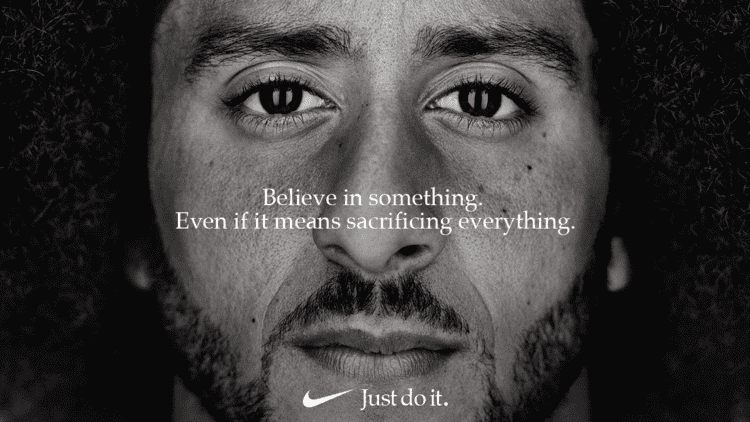
Inclusivity & accessibility
Making sure that your marketing materials are inclusive and accessible is a no-brainer in 2023. Helping more people to recognise themselves and their real-life experiences in your content is a great way to build a meaningful connection that could develop into brand loyalty. It’s also a clear statement about how much you value your customers as real human people and not just a monetary metric.
One of the most important aspects of inclusivity is sincerity. Representation for representation’s sake can quickly be seen through, and this approach may result in a negative effect on your public image. Remember as well to focus on the accessibility of your website and social media. Colour-blind-friendly designs, a choice of font sizes, and descriptive alt text are just a few of the ways to improve the user experience for more people.
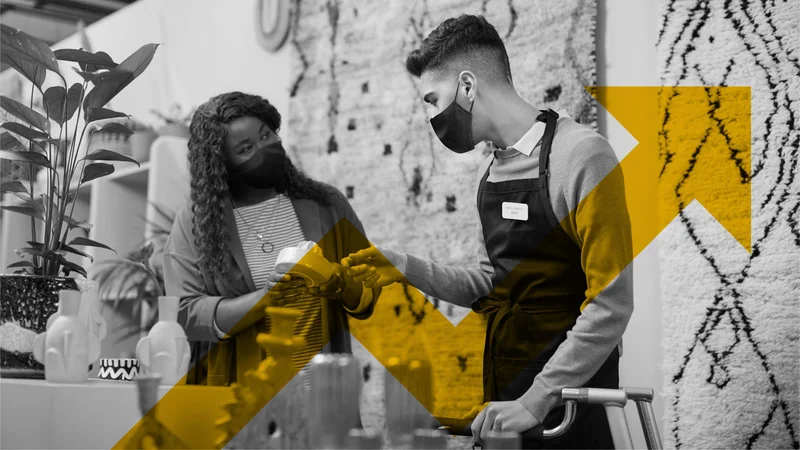
Bite-sized videos
Video storytelling is an extremely effective medium that will always have an important place in digital marketing. However, with short-form video platforms like TikTok continuing to grow, it’s become more important than ever to capture the fleeting attention span of your audience with a snappy, shareable snippet. Even internet video veteran YoutTube has embraced the trend for bite-sized videos, with YouTube Shorts racking up over 30 billion views every day.
One of the keys to success in this format is agility. Ensuring that your digital marketing teams have the skills and resources to react quickly to developing trends will make it easier for you to capitalise on key moments of exposure to make a connection with your audience. Remember that it’s also important to flex those creative muscles and work to develop something unique and inspiring that nobody else is doing. Get it right, and you just might invent the next hot new TikTok trend.
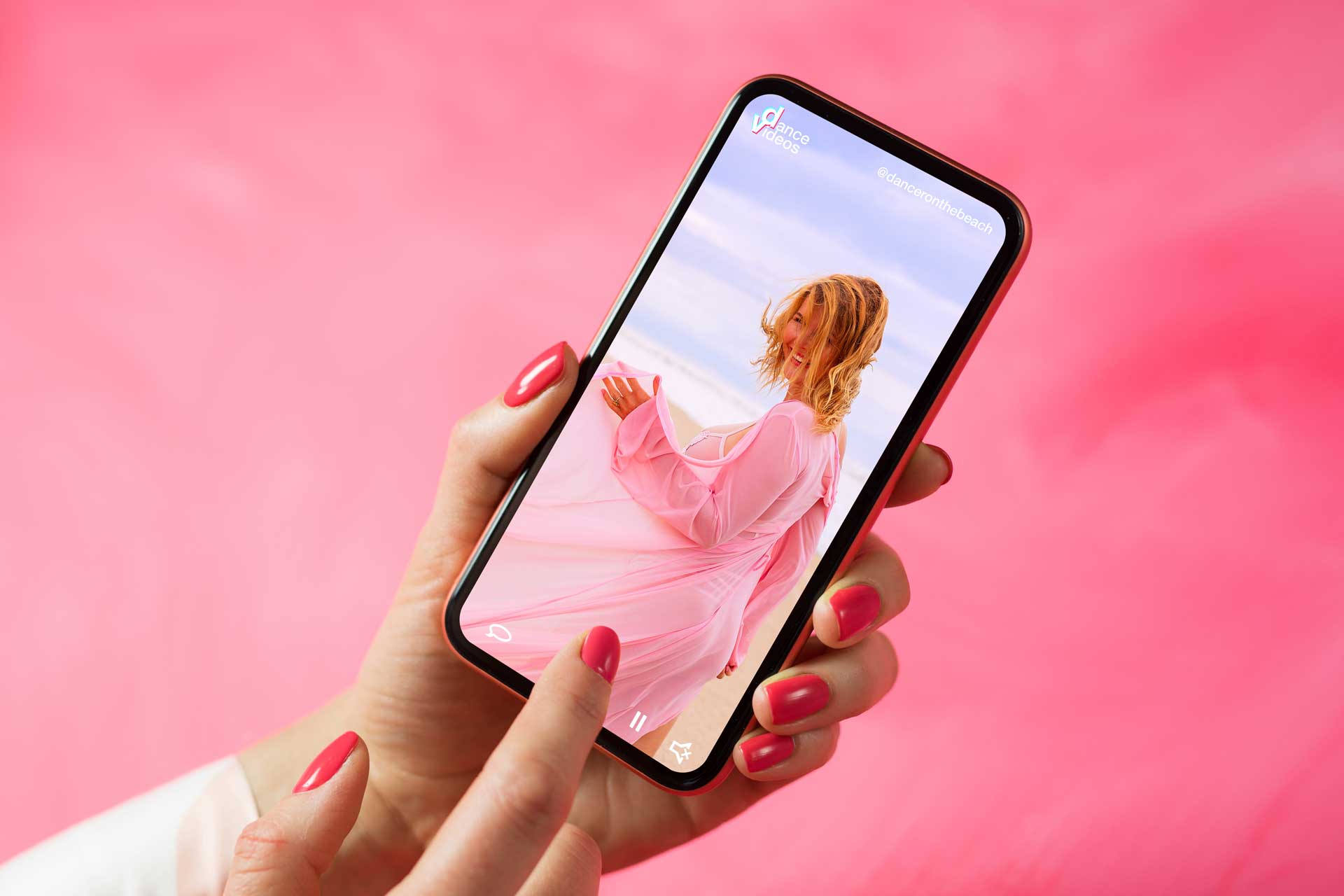
Budget-friendly content
Just in case you’re not already tired of the phrase ‘cost of living crisis’, here’s another reminder. Budgets are being stretched more thinly than ever, and many brands are having to embrace cost-saving marketing strategies wherever possible. From publishing videos shot and edited on a phone to sharing user-generated content, there are lots of ways to create marketing materials that are both budget friendly and effective.
As well as saving money, many of these low-cost methods are also fairly low effort, giving your marketing team more time and resources to focus on other things. Sharing realistic content that is relatable can also help to create a more meaningful relationship with your customers. This is particularly useful to build trust on social media, where followers are used to seeing overly edited videos, picture-perfect photos and glamorous visions of lifestyles nobody really leads.

Your 2023 digital marketing strategy
Whatever you’re working on this year, DWH would love to help you with the planning, implementation and reporting of your 2023 digital marketing strategy. We’ll get to know your brand and its audience before advising you on which trends might be suitable to help you achieve your goals for 2023. Just contact us and we’ll be happy to talk through your ideas.
Graphic design trends for 2023
As we continue to turn the pages on the calendar, graphic designers worldwide continue to develop exciting ways to tell stories, attract attention and create brand identities. Whether that’s embracing new technologies or giving a tasteful nod to the styles of bygone eras, there’s always something interesting going on in the world of graphic design. Let’s take a look at some of the top graphic design trends for 2023.
As we continue to turn the pages on the calendar, graphic designers worldwide continue to develop exciting ways to tell stories, attract attention and create brand identities. Whether that’s embracing new technologies or giving a tasteful nod to the styles of bygone eras, there’s always something interesting going on in the world of graphic design. Let’s take a look at some of the top graphic design trends for 2023.
Modern minimalism
There will always be a place for minimalism in graphic design, but this year we’re seeing a couple of new and exciting variations on this classic style.
Vibrant minimalism
At its core, minimalist graphic design embraces the essential elements and gives them room to breathe for greater impact. From basic shapes and symbols to limited colour palettes and minimal typography, it’s all about removing the clutter and embracing a less-is-more approach.
In 2023, we’re going to see an exciting mix of minimalist graphic design in bright, vibrant colours, offering a cheeky nod to the Bauhaus movement. Whether combining minimal copy and graphical elements with a single neon colour or a busy palette of clashing tones, this is a great way to create a minimalist design that’s able to catch the eye and evoke a strong sense of brand identity.
Brandless minimalism
What we’re looking at here is a stripped-back, monochrome, almost brandless form of design that deliberately eschews the flashy, decadent graphics we’re used to seeing from big companies. One of the driving forces behind this style is a form of anonymity; a sense of the brand being small, neutral and reliable.
As consumers continue to place more and more importance on brand values, ethics and environmental practices, abandoning the hedonistic idolatry of The Brand is a smart choice for companies looking to demonstrate (or give the impression) that they are a trustworthy choice.
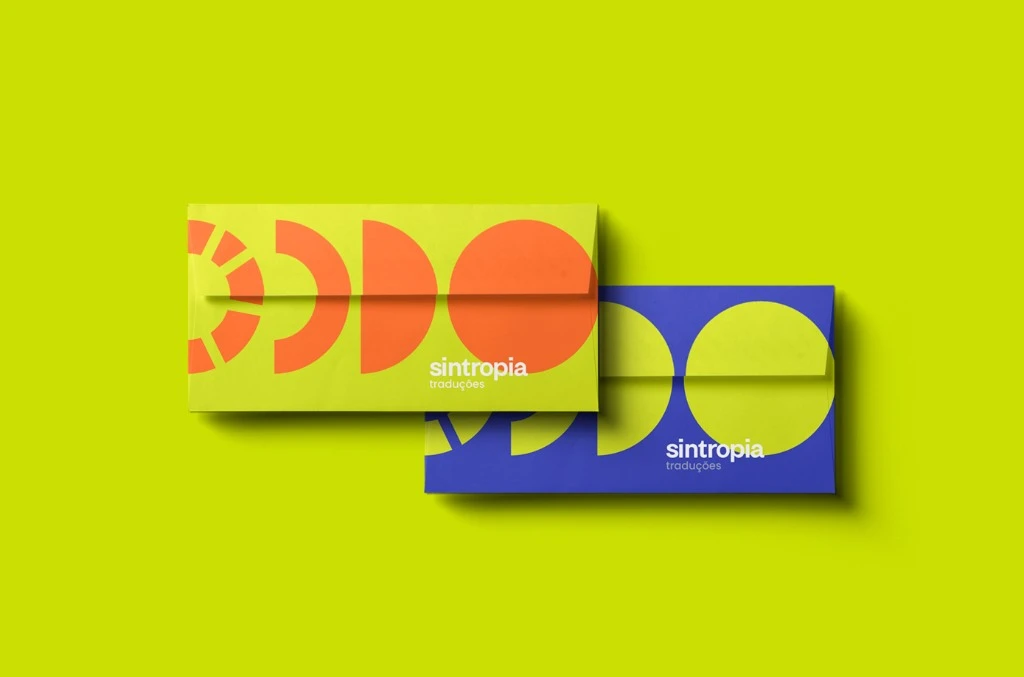
Y2K 4EVA
Retro styles are popular because they allow designers to open up an exciting new (old) world of design that younger audiences haven’t experienced, or to offer cosy nostalgia and a sense of trustworthiness to older generations. In 2022, we looked at the shift from ’80s nostalgia to ’90s nostalgia, and now we’re stepping into the noughties.
The Y2K aesthetic is a tacky blend of tech and bling that embraces 3D shapes, bright colours and holographic-like gradients, creating a bubbly vibe of wide-eyed optimism that feels pretty refreshing against the doom and gloom of the 2020s. With millennials comprising around a quarter of the UK population (and having lived through more than their fair share of unprecedented historical events), it makes sense to invoke nostalgia for the simpler times to appeal to this hefty portion of the nation’s buying power.
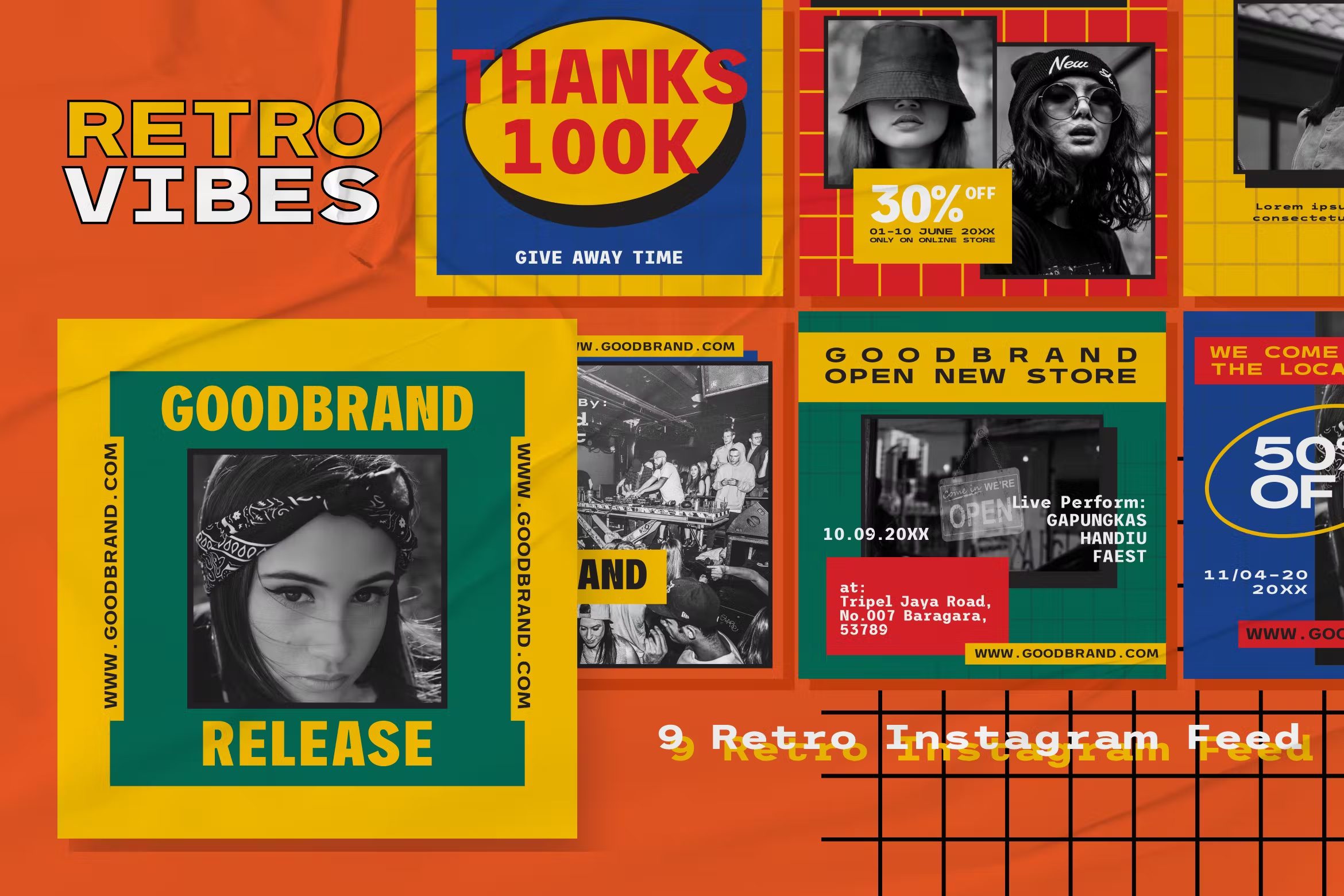
AI design
I think we can all admit to getting a little excited about the weird and wonderful world of AI art lately. With tools like Craiyon (Formerly DALL-E Mini), Dall-E 2 and Midjourney making the artistic powers of artificial intelligence accessible to the masses, the possibilities of this incredible technology have really started to come into focus.
While using AI for graphic design won’t become a staple across the board in 2023, we’ll certainly see larger brands leveraging this technology more and more. On the smaller end of the scale, AI offers a great jumping-off point for the ideation process, with the tools becoming more capable and accessible as the technology continues to evolve throughout the coming months and years.
Please enjoy the following images that I created using Craiyon.
3D simplicity
Another trend we’ll be seeing more of is a simplified approach to 3D design. In contrast to the OTT vibes of Y2K and the photorealistic possibilities of AI, this style is all about paring things down to their most simplified forms while still ensuring ease of readability. Comprising flat colours and basic shapes like spheres, cylinders and cubes, the focus is on form and fun rather than complex realism, which lends itself well to digital animation .
Avoiding textures, complex details and unnecessary flourishes lends an air of naive simplicity that brings to mind the comforting world of children’s toys and our first forays into comprehending the world around us. Anyone in a creative field can attest that constraints can actually boost the imagination rather than hinder it, forcing a consideration of solutions that don’t fit inside the standard boxes, so these simplified 3D forms can be a great opportunity to let creativity run wild.
Your 2023 graphic design strategy
If you’re looking to nail your graphic design strategy in 2023, speak to the experts at DWH and we’ll be happy to help. Whether you’re looking to emulate a popular trend, revamp your existing brand aesthetic or develop a unique style all your own, our graphic designers are ready to collaborate with you.
Branding trends we can expect in 2023
What consumers expect from the brands that interact with is constantly evolving, presenting eternally shifting goal posts for branding execs to aim for. While this means that a brand designer’s job is never done, it also ensures that innovation, creativity and industry-redefining risks are always on the horizon. Let’s take a look at some of the top branding trends we can expect in 2023.
What consumers expect from the brands that interact with is constantly evolving, presenting eternally shifting goal posts for branding execs to aim for. While this means that a brand designer’s job is never done, it also ensures that innovation, creativity and industry-redefining risks are always on the horizon. Let’s take a look at some of the top branding trends we can expect in 2023.
Animated logos
It’s now cheaper and easier than ever for even the smallest brands to embrace the exciting, innovative and engaging medium of animation. By adding a little movement, even the most basic animation is able to deliver more information than a static image. This helps to tell a story, evoke a certain emotion, or even just catch the eye in an overly saturated media environment.
In particular, animated logos will become more prevalent in 2023, adding novelty to well-known brands that have begun to fade into the background, and giving new names an exciting platform to capture the imagination of a receptive audience. With short-form video content such as TikTok ruling the internet, short bursts of animation are a cost-effective way to break through the monotony without demanding too much of that important commodity: attention.

Vintage design inspiration
In a similar vein to last year, brands are continuing to embrace the design visions of a more optimistic past. While we saw a lot of ’80s and ’90s nostalgia in 2022’s branding, we’re stepping even further back in time this year, with everything from Victorian-inspired illustrations to ’50s-style Hollywood glam.
As well as offering a comforting nod to simpler times, this allows brands to present classic styles and concepts to new audiences. Tapping into over a century of graphic design makes it easier to create an identity that stands out against modern trends, which is particularly beneficial in crowded markets where brands need to define key differentiators.

Less is more
Instead of an understated beige minimalism, brands are turning towards fewer but more carefully considered elements. Stripping everything back to one or two colours, focusing on clear typography and visually unambiguous icons can remove a lot of the fluff and make sure your designs are clean, crisp and uncluttered.
Not only does distilling your brand offering into its barest components help to clarify it to your consumers, this type of design is a great exercise in figuring out what’s actually at the very core of your offering. In the famous words of Kevin from The Office, “Why waste time say lot word when few word do trick?”

More is more
In 2023, the unapologetic use of bold, clashing colours, abstract designs and distorted fonts might cause a few headaches. For better or worse, brands will be looking to make an unforgettable impact with their designs, particularly when it comes to the attention-grabbing requirements of product packaging.
This trend presents a very narrow margin for error, and lives or dies on highly subjective choices. We’re likely to see a few hits and quite a lot of misses as brands turn their hand to this maximalist approach, and some will naturally end up being unforgettable for all the wrong reasons.
Values-based identities
As millennials and Gen Z make up more and more of the world’s purchasing power, brands need to look into ways to tap into these markets to create loyal customers. 42% of millennials say that the ethical and moral standards of a company are very important in contributing to their loyalty, and 83% want brands to align with their own values.
In 2023 and beyond, we’ll be seeing more brands placing their mission at the forefront of their identities, and brand values will take a much more blunt approach. Gone are the days of adopting a favourite charity after a decade in business to curry favour with the masses; instead, morality will be baked into their identities from day one in the form of brand names
Statement typography
For a while, we saw brands adopting minimalist sans-serif fonts, with many even changing their logos to something simpler and more streamlined. Now, typography is taking over, with over-the-top lettering, text-only designs and playful wording taking over.
As well as graphical typefaces, brands are embracing more whimsical ways of writing words, replacing letters with icons, illustrations and even 3D objects. This is a great way to show off your product or explain your service without the need for lengthy paragraphs of copy, helping brands to present themselves succinctly in even small, static applications.

Looking to refresh your brand in 2023?
If any of these exciting brand trends sound appealing to you, or if you simply want to take your identity in a new direction, speak to the branding experts at DWH. We offer complete branding and identity design packages for businesses of all sizes, so whether you’re a start-up looking for your first logo or an international chain with your sights set on a new demographic, we can work with you to create a design identity that feels right.
